North Devon was a pleasant surprise. Although there aren’t many country houses and stately homes,…
A boat trip on the rural River Thames
Believe me, my young friend, there is nothing – absolutely nothing – half so much worth doing as simply messing about in boats.
Said Ratty to Mole, in “The Wind In The Willows”, the classical children’s tale which is sadly almost unknown in my home country, Hungary. What a pity I have to say, because the lovely story of Mole, Ratty, Badger and Toad takes us to the world of the Thames Valley and we can follow their adventures. It is still one of the most popular classical children’s novels in England, written by Kenneth Grahame who after his mother’s death moved from Scotland to live with his grandmother in Cookham Dean in Berkshire at age 5. His uncle introduced him the beautiful life of the River Thames, which inspired Grahame later to write “The Wind In The Willows”.
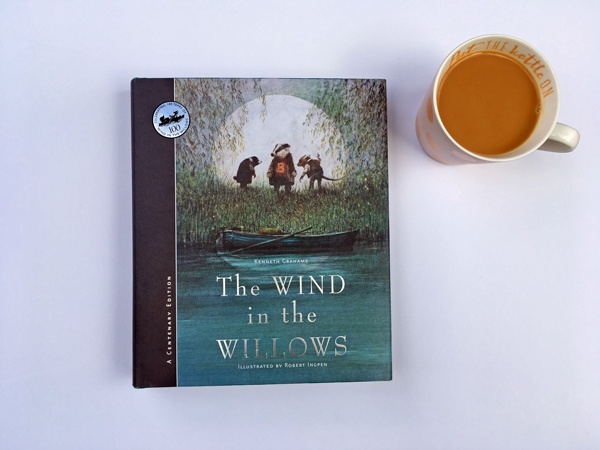
Why is this important?
Not just because I live one street away from the River Thames in Maidenhead, but I think about the tale every time I walk by the River Thames and see willow trees, also because I felt like Mole when he first sat in a boat with Ratty: I was as excited as him having my first boat trip on the rural Thames two weeks ago. Many people would associate the Thames with London and although the river flows through the capital, to me the Thames means the English countryside. The Thames Valley that Kenneth Grahame wrote about.
A boat trip on the rural Thames
My colleagues planned a boat trip on the Thames as a team building event and I was happy already by the thought of our starting point: Oakley Court. You could probably drive up to the building any time as it is a hotel and restaurant, but I bet you thought about some places that they were open to guests only and in the end you did not dare going in. This is how I always felt about this place, but this time, I was invited on the grounds of this amazing country house which was built in 1859 in Victorian Gothic style by the River Thames. It is said that it was the headquarters of the French Resistance during the Second World War and Charles de Gaulle was a frequent visitor. Later, several films were shot in the building and perhaps the most famous one is the Rocky Horror Picture Show (RHPS), a horror-comedy-musical from the 70s. Bill thinks it is a interesting film, well I am not sure… To me even the trailer was too much and a bit of a shock… Getting back to the building, it amazed me with its many gargoyles, statues and turrets and arched windows. I was sorry, however, that the grass was not green, but as Axel Foley (Eddie Murphy) says in the Beverly Hills Cop 2, “I am compromising my lifestyle.” 🙂


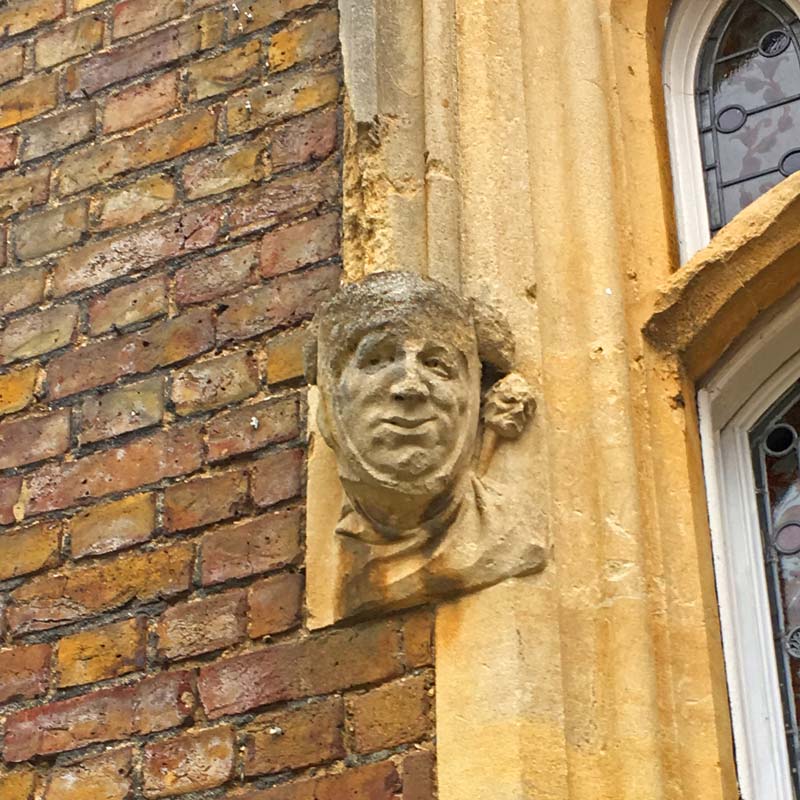
Something truly English…
When I got behind the building, the sight of the striped deckchairs, the lawn and the Thames was so English that it could not be more English to be honest, not to mention our boat. However, the boat itself was a Dutch motor yacht built in 1960 and called “Fringilla”. We all got on board and started to cruise up the river towards Cliveden as it was said to be more picturesque than downstream towards Windsor. I was so looking forward to our trip because you always get a different view of things from the middle of the river. From the Thames you can see things which are hardly, or not visible at all from the land side riverbanks.
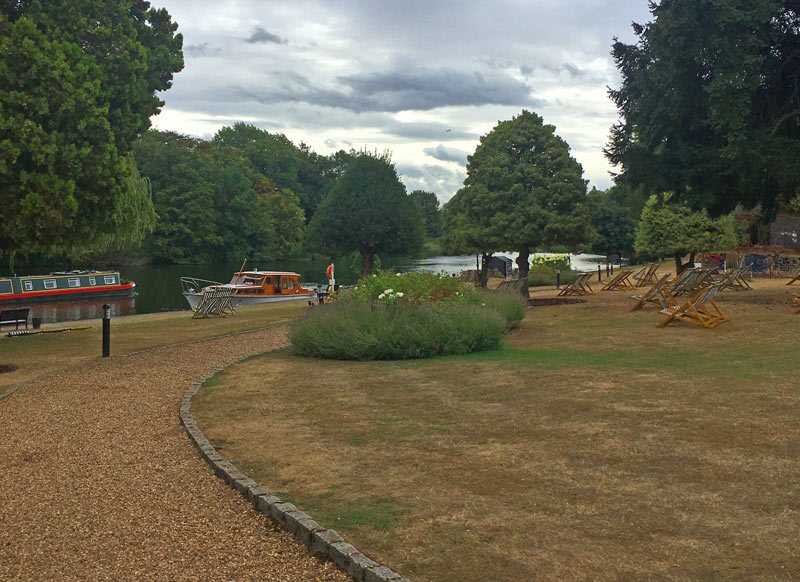

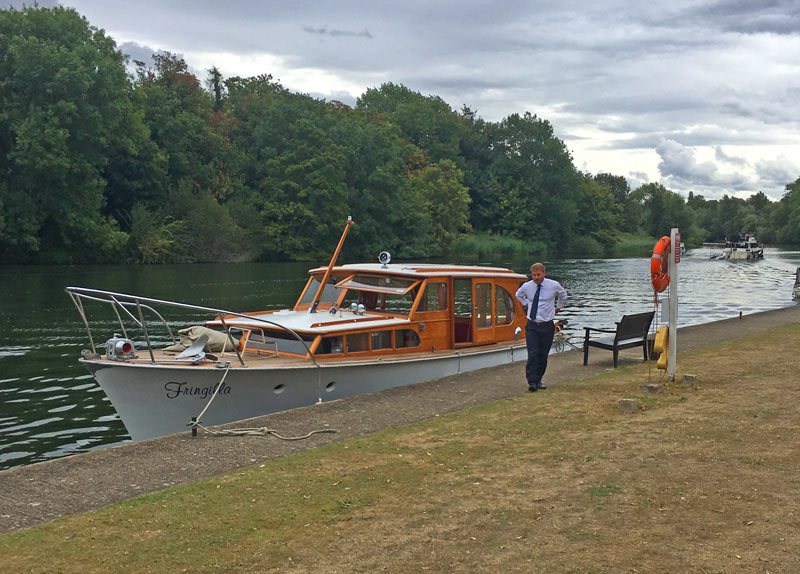
Not only the nature, the willow trees, reeds and river life (herons, cormorants, ducks, geese and swans) amazed me, but the riverside houses! They all had different styles and I could not imagine how people can afford places like these. Our 22 year old skipper then enlightened me that many of these fabulous houses are owned by famous people like Michael Parkinson (a retired chat show host) or by very wealthy people.
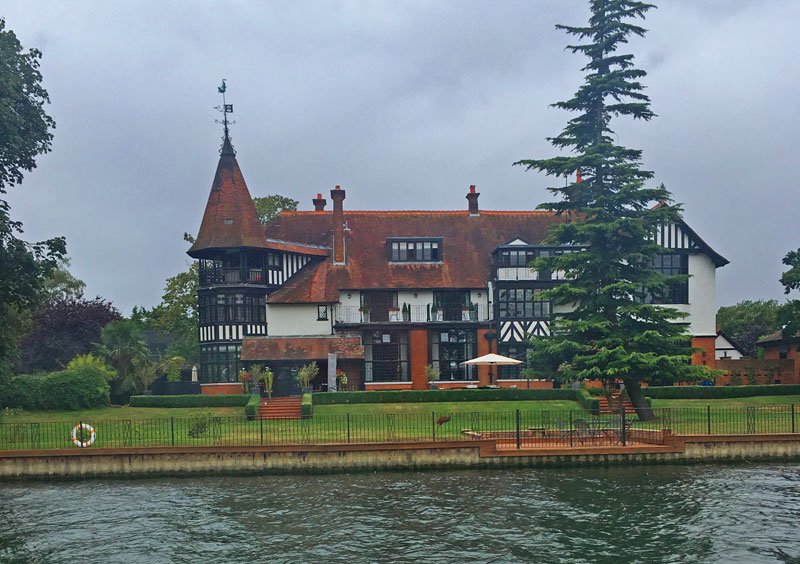
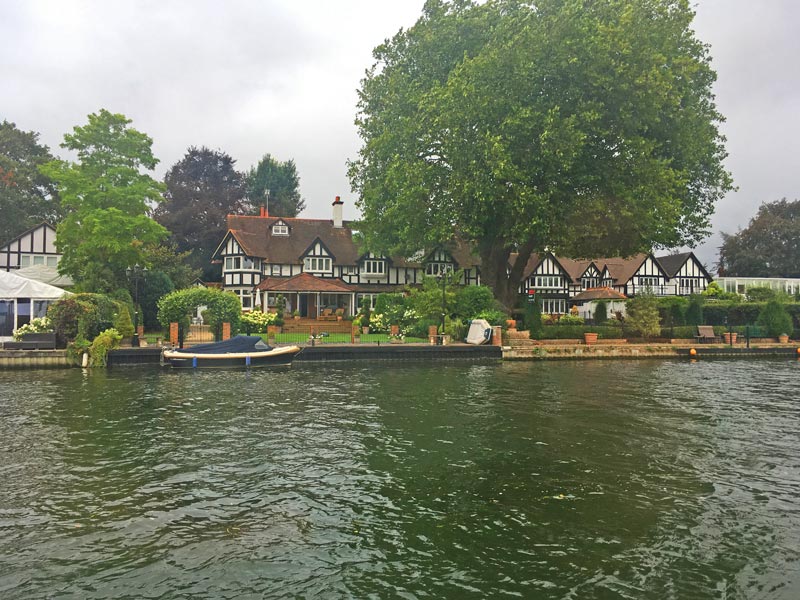
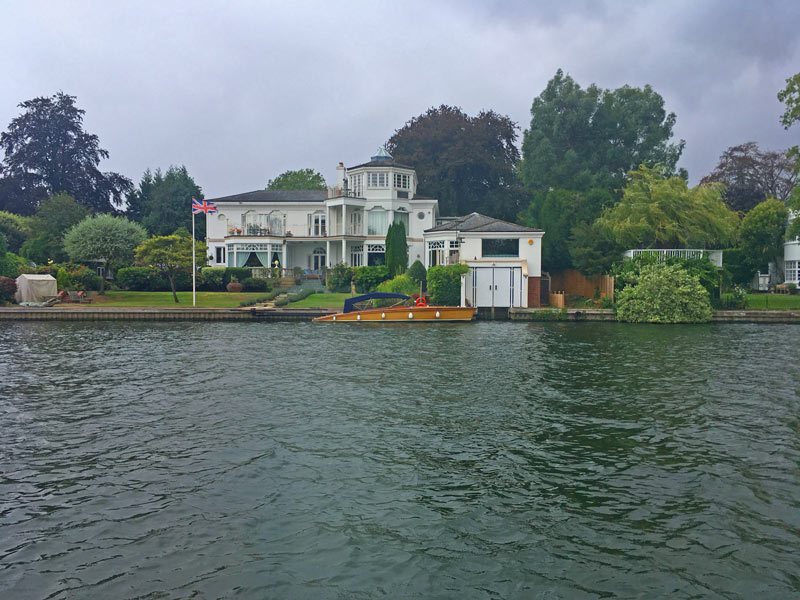
I was so excited to pass the locks on the river. The first one was Bray Lock which is quite small, narrow and shallow. We passed it fairly quickly and approached Maidenhead.
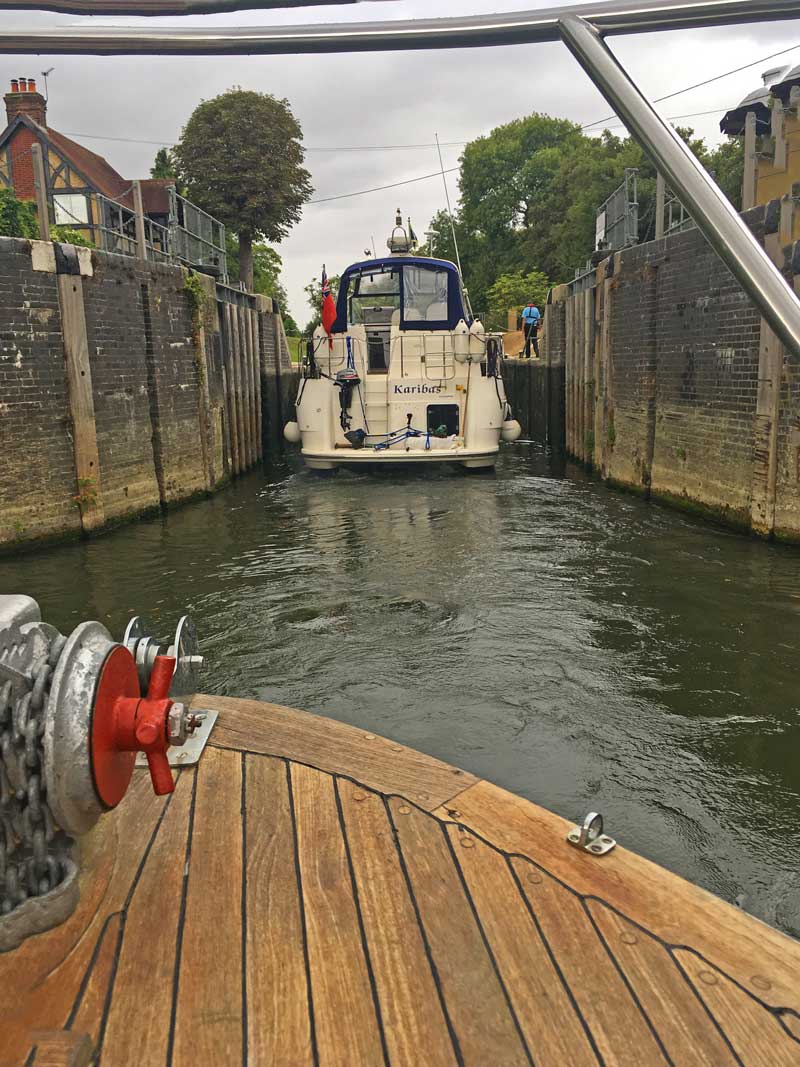
On the way to Cliveden
On the way to Maidenhead we saw many little islands, which in English are also called “eyots” and “aits” and these words are used almost exclusively for islands in the River Thames. The word „ey” enters into the composition of many riverside towns and villages like Putney or Henley. Most of the islands were formed naturally, but some have been artificially created. After the Great Fire of London in 1666, Berkshire stone was brought up to London in barges for the rebuilding. On the return journey the barges carried rubble which was dumped on the islands. Later, during the 19th century when the underground and sewage systems were built in London, the excavated rubble was dumped on islands close to London. Originally there were two activities performed on the river islands: growing and harvesting osier willows (used in basket making) and eel trapping. Some of the islands are still inhabited today but the majority are not and have become nature reserves. Of course many of the islands have interesting stories and history, but that is going to be another post…
Bridges of the Thames
We passed Isambard Kingdom Brunel’s Sounding Arch (a railway bridge over the Thames, built in 1839, still used today by mainline trains to London) which nobody would have believed would stand because of the low-rise arches. There you go, it is still standing today so Brunel did a fantastic job. And why is it called the Sounding Arch? Because if you say something under the bridge it echoes. We tested it and it is true: our “wolf howling” echoed perfectly.

Then we passed Maidenhead Bridge, which is a Georgian bridge and was a very important bridge during the coaching era connecting London with Bath. Finally we got to Boulter’s Lock where I have watched many times boats passing the lock – of course standing on the riverside. Our skipper warned me not to fall into the lock as this one is quite deep. Indeed, this lock is much bigger than the one in Bray and I think 6 boats fitted in when we passed through it.
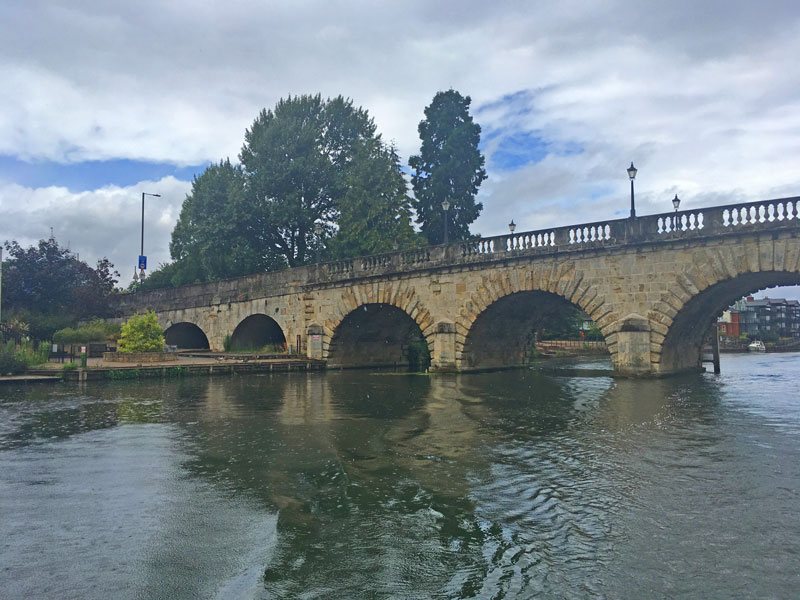
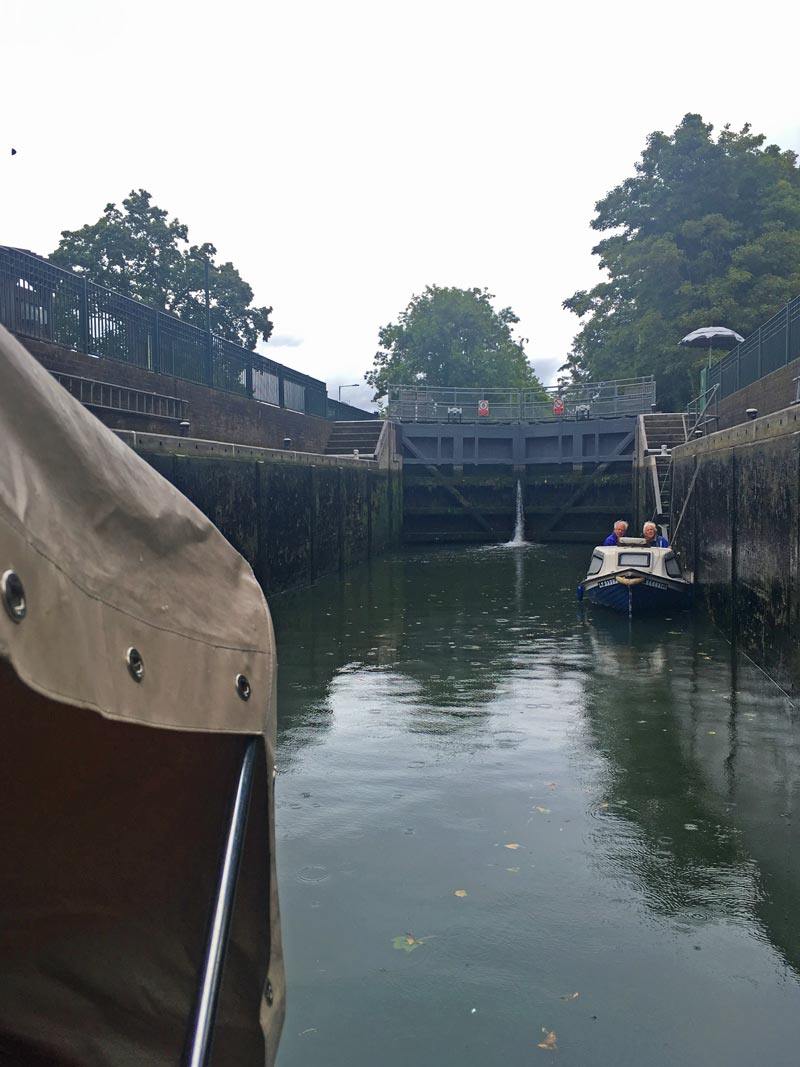
After having passed the Ray Mill Island and the weir, we arrived at the highlight of our boat trip as 10 minutes from the lock you can see Cliveden, an amazing Italienne mansion owned by the National Trust and where Meghan Markle stayed the night before her wedding. Even the sun came out giving a perfect contrast with the black clouds and I could not resist climbing out to the bow of the boat. Cliveden shone like a diamond and I remembered what Stanley Spencer, the English painter said:
You can’t walk by the river at Cliveden Reach and not believe in God.
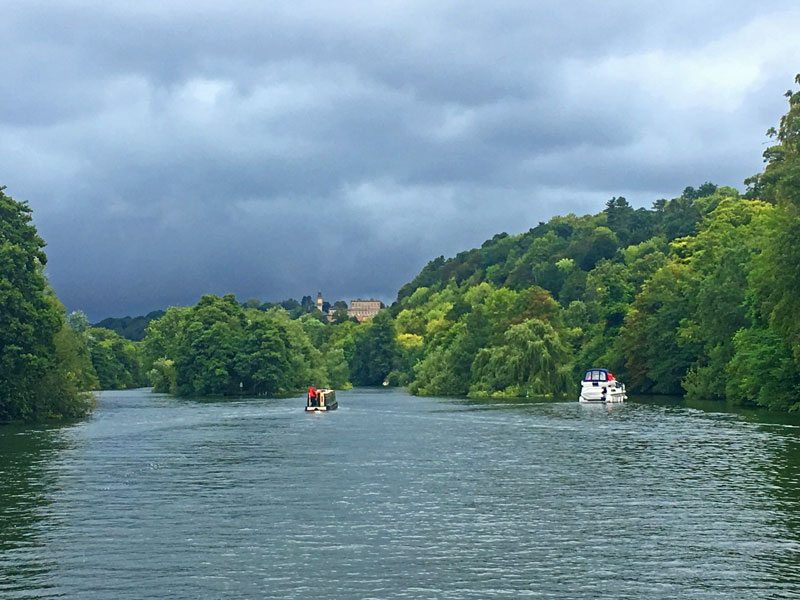
I think, this artist from Cookham hit the nail on the head, the view was spectacular. We also passed the Spring Cottage which was built in 1813 for the Countess of Orkney and where Queen Victoria too spent some time. Even a staircase was built for her visit. Today this cottage is not a simple cottage but a luxury villa that you would not believe.
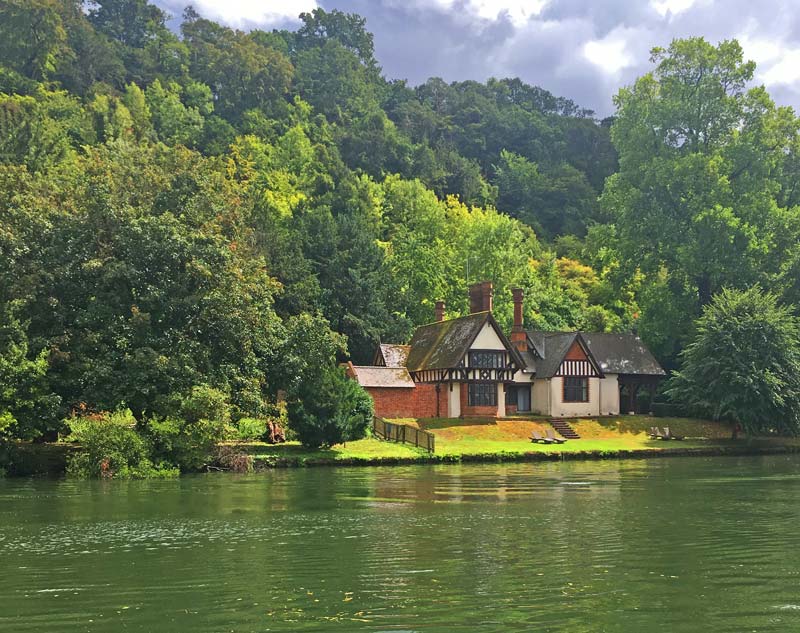
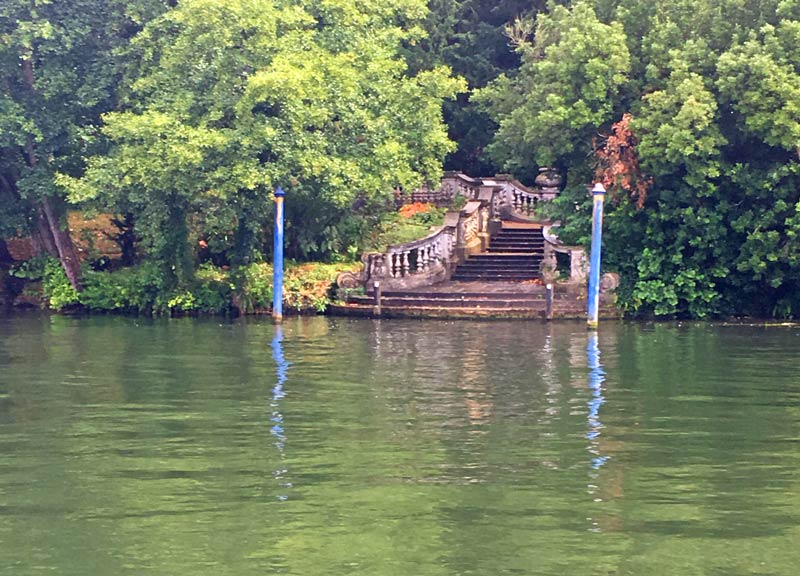
I was not discouraged by the weather which at this point turned really bad and started to rain heavily. “How many people can say they had a boat trip on the River Thames in sunshine and rain at the same time?” , I thought. We turned back just before Cookham Lock and made our way back to Oakley Court. On the return journey I tried to take in as much as I could, watched the different birds and just enjoyed the trip.
A few facts about the river Thames:
- The Thames is England’s longest river with its 346km and the second longest river in the UK after the River Severn.
- The Thames is not really a deep river. At our starting point it is only 1-1,5m deep. However, there are deeper sections elsewhere.
- There are 45 locks on the river.
- Officially there are 80 islands in the Thames, but a more precise research believes the number of islands is 190, all of various sizes maybe unclassified officially as islands

~
I think, having a boat trip on the River Thames (especially in a boat like “Fringilla”), having a picnic and eating sandwiches and spending a day is something that a foreigner would classify as very English. I am not surprised there are so many boats out on the river – some travel by little rowing boats, some by yachts, some by barge. It is good to see this tradition is still alive and many English people get out on the river just like Ratty and Mole did…

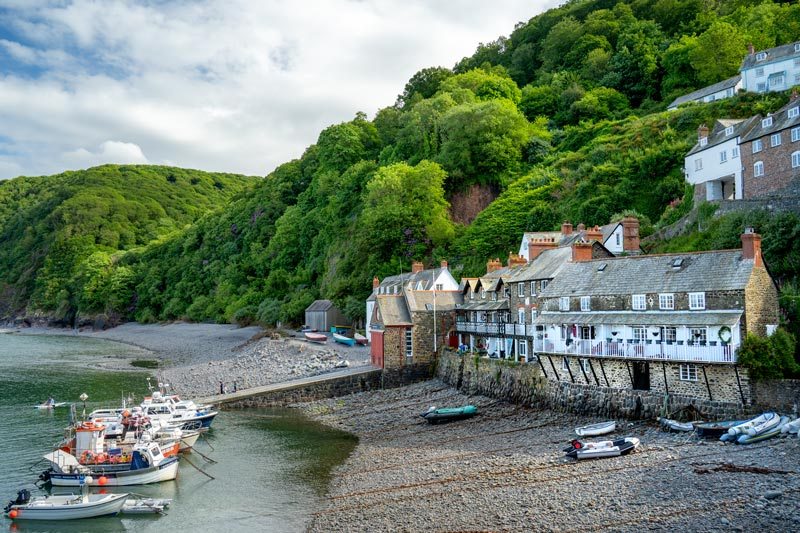
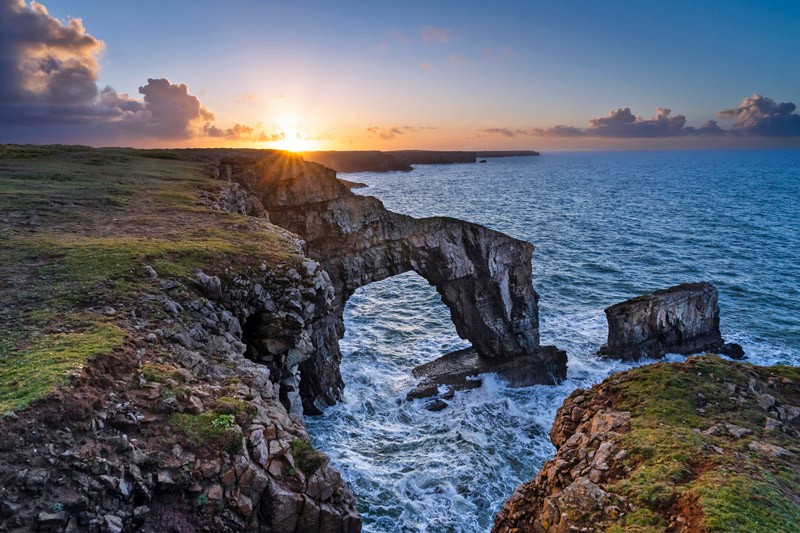

Comments (0)